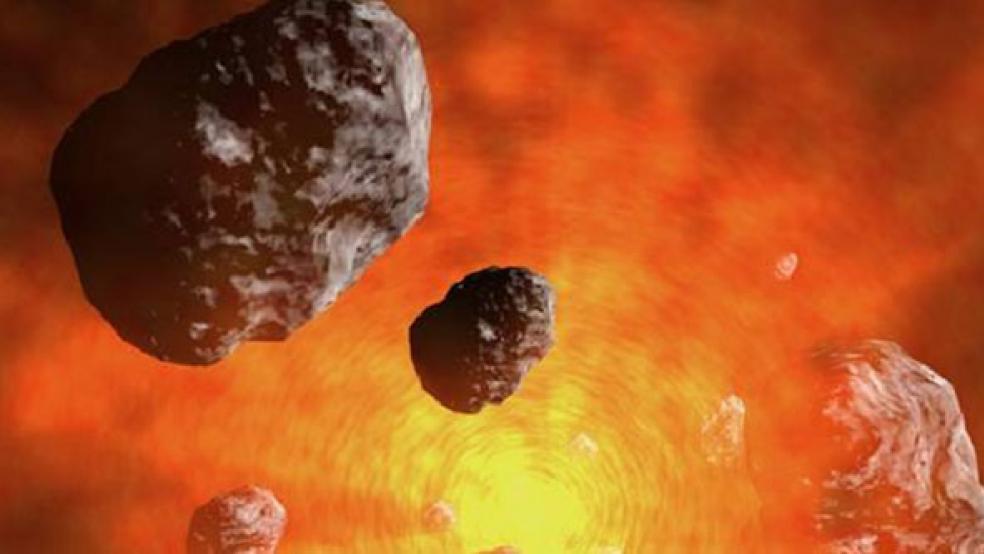Michael Lewis is an entertaining writer, and his 1989 article predicting a massive disruption to the global economy should a catastrophic earthquake hit Japan is now rocketing around the Internet.
“Prescient,” declared Business Insider. “Disturbingly prophetic,” said The Huffington Post.
Tokyo, one of the world’s largest and economically influential cities, lies at the junction of three major seismic faults. The potential for another earthquake the magnitude of the 1923 temblor that leveled the city and killed 125,000 people has long been known.
Could Lewis’ scenario come to pass? It’s one thing to talk about modern-day building codes and earthquake-resistant construction techniques (it would appear the newly-named Tohoku earthquake did minimal damage to Japan’s capital city). It’s quite another to imagine a 30-foot wall of water washing over that megalopolis. No doubt a global depression – both financial and psychic – would ensue, as Lewis projected.
So even while the world mourns the loss of thousands of lives in and around Sendai, fears the still out-of-control nuclear disaster in Fukushima province, and wonders how a wounded Japanese economy will affect global commerce, it’s not too soon to begin worrying and planning for the many mega-catastrophes that could befall any region on earth over the next century.
Here are the top six, in ascending order of destruction:
IT’S UP TO YOU, NEW YORK, NEW YORK
In 2007, the Intergovernmental Panel on Climate Change predicted that oceans will rise anywhere from six inches to two feet by 2100 due to man-made global warming. That will be catastrophic for small island nations like the Maldives and Tuvalu and will probably wreak havoc on low-lying coastal regions of every country, with especially pernicious consequences in heavily populated countries with extensive coastal zones like Bangla Desh and Nigeria.
But that’s the lower bound estimates. What happens if there is massive ice melts in Antarctica, or a hunk of Greenland suddenly falls into the North Atlantic? Some models show ocean levels suddenly rising by six feet or more. It would add a whole new dimension to the difference in real estate values between Fifth and First avenues in Manhattan.
THERE GOES NEW MADRID
Never heard of it? The New Madrid fault runs for a couple of hundred miles through the heart of the Midwest, stretching from Illinois to Mississippi. A series of massive quakes in 1811-12 when the region was sparsely populated could be felt as far away as New York and Boston. In recent years, the area has once again become seismically active.
In 2008, the Federal Emergency Management Agency warned that an 8.0 at the center of the New Madrid fault would destroy 60 percent of Memphis, cost thousands of lives, and result in $50 billion in property damage in that city alone. Even a 7.7 magnitude quake along the length of the fault would disrupt water, sewage, gas and telecommunications services, and damage tens of thousands of structures over an eight-state region.
LET’S NOT FORGET SAN FRANCISCO
It’s been 104 years since the big one hit San Francisco. The Earthquake Engineering Research Institute projected in 2006 that a comparably-sized earthquake today would kill 1,800 to 3,400 people and damage more than 90,000 buildings. A quarter million people would become homeless. The damage estimate of $122 billion did not include any loss from fire, which was the biggest cause of damage after the 1906 quake, according to this MSNBC story.
WATER, WATER EVERYWHERE
It’s not earthquakes that people in Japan fear most. It’s the subsequent tsunamis, which often come so quickly that even the best prepared families cannot escape their devastating paths. Scientists believe a massive landslide somewhere on earth could unleash a mega-tsunami that would criss-cross the globe with terrifying speed, inundating coastal cities.
According to this BBC report, there are a small number of “rare geological time-bombs” scattered across the globe whose collapse could trigger such an event. The most likely candidate? In 1949, a volcano on the southern tip of La Palma in the Canarie Islands erupted, leaving a huge crack along one of its sides. Should it erupt again and the entire mountain fell into the sea – a distinct possibility sometime in the next few thousand years – it would be like throwing a 500,000-ton rock into the Atlantic Ocean.
“Scientists predict that it will generate a wave that will be almost inconceivably destructive, far bigger than anything ever witnessed in modern times,” the BBC reported. The wave, traveling at the speed of a jetliner, would slam into the U.S. east coast in about five or six hours.
DODGING THE ASTEROID BULLET
If you think Tokyo going down would swamp the global economy, try to imagine what an asteroid the size of QQ47 would do. Never heard of QQ47? It was a short-lived threat identified in 2003 that seemed to be pointed directly for earth, due to arrive in 2014. It’s impact, CNN reported, would have been the equivalent of 20 million Hiroshima-sized atomic bombs. NASA Scientists quickly did some recalculations, and figured out the threat was essentially zero. Whew.
THE MOTHER OF ALL EXTINCTIONS
But will earth remain lucky forever? Scientists believe a massive asteroid from 3 to 7 miles across slammed into earth about 250 million years ago – a blink of the eye in geologic time. The resulting explosion and climate change wiped out 90 percent of the species on earth. “It was the mother of all extinctions,” geochemist Luann Becker told the Seattle Post-Intelligencer in this story from 2002. Many scientists also believe a wayward comet killed off the dinosaurs a couple hundred million years later.
The headline: “Dow Sinks as Earth is Destroyed.”
Related Links:
House-Size Asteroid Zooms Close to Earth (Fox News)
Japan Earthquake Not the Big one? (National Geographic)
U.S. Reactors Can Withstand Quakes, Tsunami: NRC Chief (Reuters)




